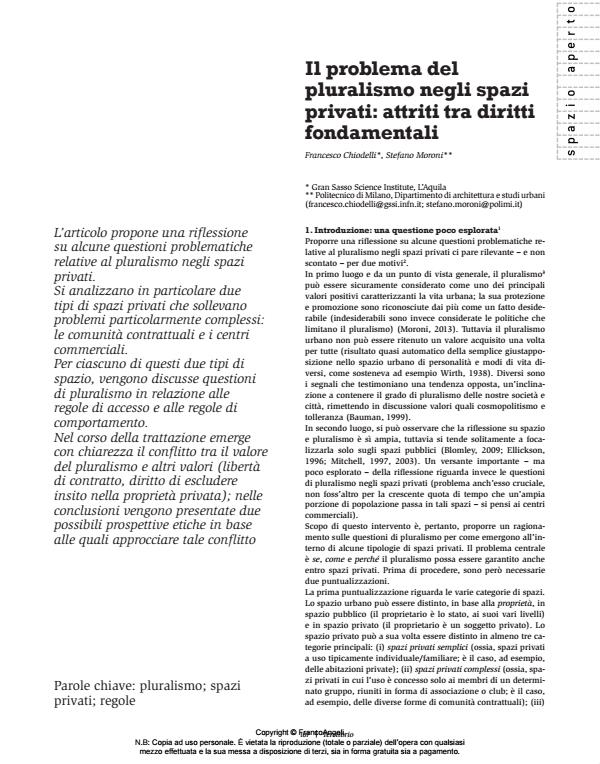Il problema del pluralismo negli spazi privati: attriti tra diritti fondamentali
Titolo Rivista TERRITORIO
Autori/Curatori Francesco Chiodelli, Stefano Moroni
Anno di pubblicazione 2014 Fascicolo 2013/67
Lingua Italiano Numero pagine 8 P. 107-114 Dimensione file 231 KB
DOI 10.3280/TR2013-067019
Il DOI è il codice a barre della proprietà intellettuale: per saperne di più
clicca qui
Qui sotto puoi vedere in anteprima la prima pagina di questo articolo.
Se questo articolo ti interessa, lo puoi acquistare (e scaricare in formato pdf) seguendo le facili indicazioni per acquistare il download credit. Acquista Download Credits per scaricare questo Articolo in formato PDF

FrancoAngeli è membro della Publishers International Linking Association, Inc (PILA)associazione indipendente e non profit per facilitare (attraverso i servizi tecnologici implementati da CrossRef.org) l’accesso degli studiosi ai contenuti digitali nelle pubblicazioni professionali e scientifiche
This paper discusses some of the problematic issues relating to pluralism in private spaces. Two types of private spaces are analysed which raise particularly complex issues: contractual communities and shopping centres. Questions of pluralism are discussed for each of these two types of space in relation to rules for access and rules of behaviour. What clearly emerges from the discussion is the conflict between the value of pluralism and other values (freedom of contract, the right to exclude intrinsic to private property). Two possible future ethics are presented in the conclusion on the basis of which this conflict can be approached.
Parole chiave:Pluralism; private spaces; rules
- Spazi urbani e diritto alla città Stefano Moroni, Francesco Chiodelli, in CRIOS 13/2017 pp.31
DOI: 10.3280/CRIOS2017-013003
Francesco Chiodelli, Stefano Moroni, Il problema del pluralismo negli spazi privati: attriti tra diritti fondamentali in "TERRITORIO" 67/2013, pp 107-114, DOI: 10.3280/TR2013-067019